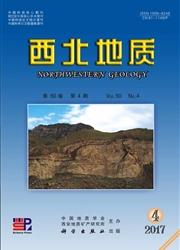

 中文摘要:
中文摘要:
黄土地区存在许多古滑坡体,由于滑后土体土质疏松,裂隙发育,在坡脚开挖作用下极易发生变形破坏,造成大量财产损失,同时也对开挖施工安全构成了极大的威胁,因此对坡脚开挖诱发古滑坡复活的失稳机制的研究十分迫切和必要。以延安市王窑村滑坡为例,通过室内试验分析了三轴应力环境下围压、含水量对土体变形破坏的影响,并运用数值模拟研究了开挖过程中最危险滑面上的应力及强度变化趋势,揭示了坡脚开挖诱发古滑坡复活的变形破坏机理。研究结果表明:坡脚开挖改变了坡体中下部的应力分布,抗滑段土方开挖减小了滑坡抗滑力,增大了下滑力,最终滑坡下滑力超过抗滑力,导致古滑坡复活。
 英文摘要:
英文摘要:
There are many ancient landslides in the loess area. The slip mass of ancient landslide is incompact and fissured, it's easy to slide under the slope toe excavation. The landslides triggered by slope toe excavation have caused a great quantity of economic losses and have posed an enormous threat on safety during construction; hence there are practical significances to study on its mechanism. Focusing on Wangyao Village landslide in Yan'an, the effect of confining pressure and moisture to loess is obtained by triaxial test, the stress and strength change on the most dangerous slip surface during excavation are studied and the deformation and fracture mechanism of the ancient landslide resurrection are revealed based on numerical analysis. The results show that excavating on the toe of slope changed the stress distribution and the shear stress in middle and lower part of slope, making the sliding resistance decreased and sliding force increased, in the end, the sliding force exceeds the sliding resistance and then the landslides occurred.
 同期刊论文项目
同期刊论文项目
 同项目期刊论文
同项目期刊论文
 期刊信息
期刊信息
